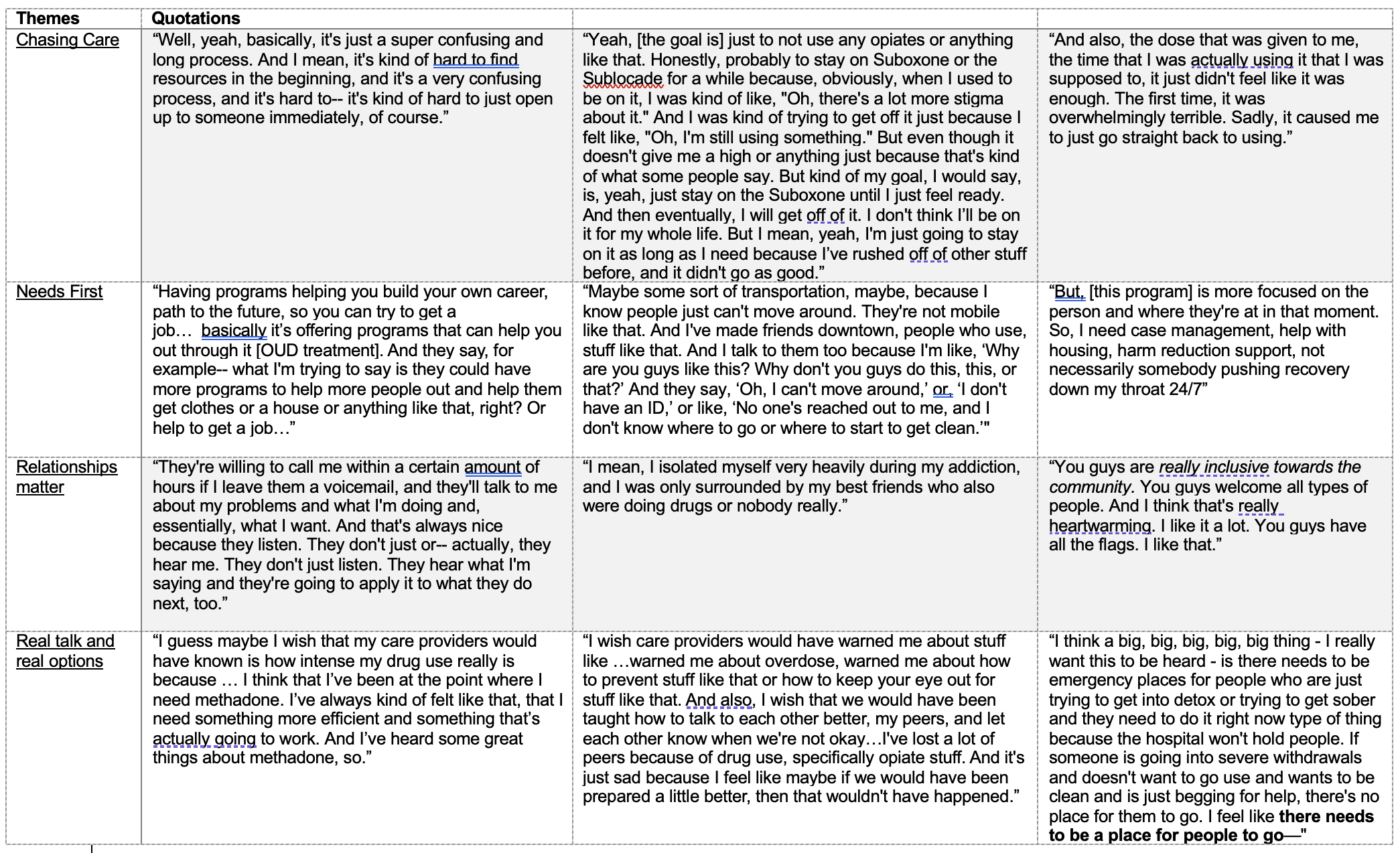Adolescent Medicine 4: Hot Topics
Session: Adolescent Medicine 4: Hot Topics
120 - "There needs to be a place for people to go": A Qualitative Study about Access to Opioid Use Disorder Care for Youth and Young Adults
Monday, April 28, 2025
7:00am - 9:15am HST
Publication Number: 120.3998
Alexis Ball, Seattle Children's, North Bend, WA, United States; Teresa M. Winstead, UW ADAI, Olympia, WA, United States; Anthony Floyd, University of Washington School of Medicine, Seattle, WA, United States; Samyukta Singh, University of Washington School of Medicine, Seattle, WA, United States; Caleb Banta-Green, University of Washington School of Medicine, Seattle, WA, United States
- AB
Alexis Ball, MD MPP
Acting Assistant Professor
Seattle Children's
North Bend, Washington, United States
Presenting Author(s)
Background: Opioid misuse and opioid use disorder (OUD) have devastating health and social consequences for young individuals. Effective treatments exist for OUD. However, youth have low engagement and retention in OUD care and with medications for OUD (MOUD). Limited studies have evaluated youth’s experiences seeking and receiving care for their OUD. It is critical to understand these experiences to improve engagement in care for this vulnerable population.
Objective: To examine how youth navigate support for OUD, access MOUD, and explore barriers and facilitators to OUD care.
Design/Methods: We conducted semi-structured interviews with English-speaking youth (ages 15-25) who had accessed care for OUD. Participants were recruited through purposive and respondent driven sampling based on age, OUD status, and clinical referral. Interviews were conducted in-person or by phone, audio-recorded and transcribed. Rapid qualitative analysis strategies were employed to expedite translation of findings to practice.
Results: From interviews with 20 youth and young adults, we identified 4 main themes: ‘chasing care,’ ‘needs first,’ ‘relationships matter,’ and ‘real talk and real options’ (Table 1). These themes convey the difficulty participants faced establishing viable care connections despite available wrap-around services. Treatment success was reported to be improved when programs addressed basic needs (housing, transportation, employment). Both ‘relationships matter’ and ‘real talk and real options’ emphasized that authentic and informed engagement with youth was crucial for treatment retention. 'Real talk and real options' also described a need to improve the quality of information youth encounter throughout their care journey.
Conclusion(s): In this study of youth with OUD, we found that participants faced numerous complex barriers when seeking care for OUD. Youth wanted appropriate and accessible care for their OUD that integrated supports for basic needs. Youth wished they had learned about fentanyl and associated risks earlier. They also wished they had learned about MOUD much earlier in their care engagement process. Youth valued non-judgmental relationships which respected their autonomy, identity, and recovery goals. These findings suggest improving youth engagement and retention in OUD care requires both structural changes to increase treatment accessibility and basic needs support as well as youth-centered approaches that foster genuine connections.
Key Themes and Associated Quotations


